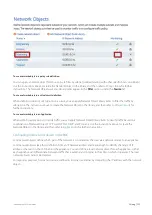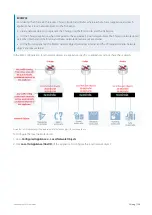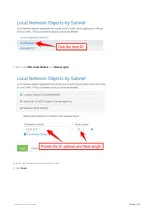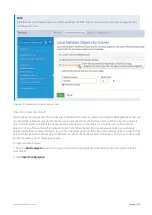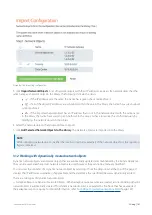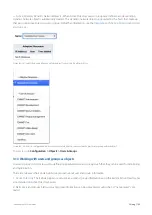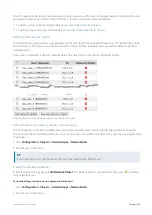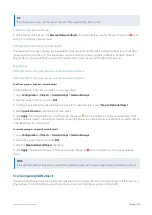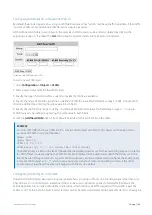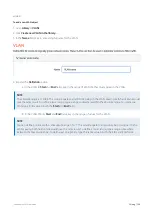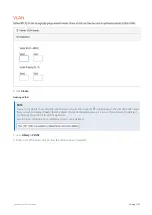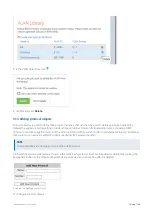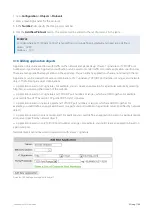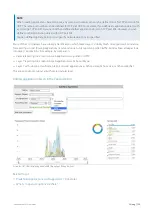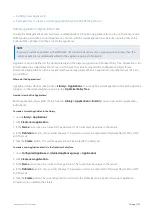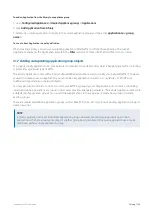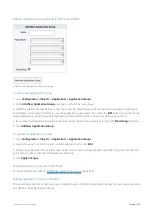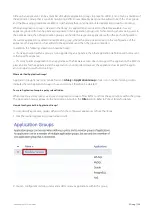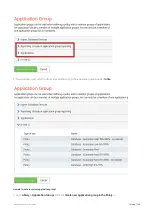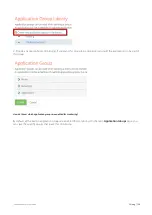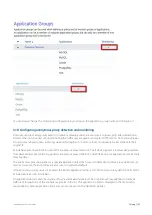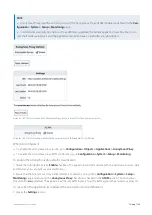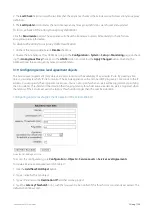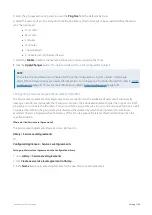
Exinda Network Orchestrator
3 Using
|
145
Configuring VLAN objects in the Exinda Web UI
By default, theExinda Appliance has a single VLAN defined called "ALL", which matches all traffic (regardless if that traffic
is part of a VLAN or not). Additional VLAN Objects can easily be added.
All the defined VLAN objects are shown in the table. Each VLAN object can be edited or deleted by clicking the
appropriate button in the table. The
ALL
VLAN object is protected and cannot be edited or deleted.
Screenshot 44: Adding a new VLAN.
To add a new VLAN object:
1.
Go to
Configuration > Objects > VLANs
.
2.
Enter a meaningful name for the VLAN object.
3.
Specify the type of VLAN to define. Currently only 802.1Q VLANs are available.
4.
Specify the range of VLAN IDs to define. To define all VLAN IDs, leave this field blank or type 0 - 4094. A single VLAN
ID can be defined by entering the same value in both fields.
5.
Specify the VLAN Priority range to define. To define all VLAN Priorities, leave this field blank or type 0 - 7. A single
VLAN Priority can be defined by entering the same value in both fields.
6.
Click the
Add New VLAN
button. The VLAN will be added to the list of VLANs in the table.
EXAMPLE
Consider VoIP traffic that has a VLAN ID of 10. Create a VLAN object with this ID. This object can then be used to
prioritize VoIP traffic using the Optimizer.
Name: VoIP
Type: 802.1Q
VLAN ID: 10 - 10
VLAN Priority: 0 - 7 (or leave this field blank)
The VLAN priority is a field in the 802.1Q header that networking devices use for their own QoS-purpose. In order for
the VLAN Object to work properly, the VLAN Priority field indicated in the object must match the Priority set in the
802.1Q header. If the priority set for a specific VLAN is unknown, Exinda recommends to configure the VLAN priority
inside the VLAN object as “0 – 7”, which covers all possible scenarios. For most networking vendors, if the VLAN
priority was not specified, the packets are tagged with Priority 0 by default.
Configuring VLAN objects in the EMC
Virtual LAN (VLAN) Objects are used to logically separate hosts (or groups of hosts) on a functional basis rather than on a
physical basis. Once VLAN Objects are defined, they can be used in Optimizer policies to filter traffic. By default, the
Exinda Appliance has a single VLAN defined called
ALL
, which matches all traffic (regardless if that traffic is part of a
VLAN or not). The
ALL
VLAN object is protected and cannot be edited or deleted. Additional VLAN Objects can easily be
Содержание EXNV-10063
Страница 98: ...Exinda Network Orchestrator 2 Getting started 98 6 Click New The New Virtual Hard Disk wizard opens ...
Страница 99: ...Exinda Network Orchestrator 2 Getting started 99 7 Select VHDX as the Disk Format type and click Next ...
Страница 130: ...Exinda Network Orchestrator 2 Getting started 130 Screenshot 35 The life cycle of configuration status ...
Страница 369: ...Exinda Network Orchestrator 4 Settings 369 ...
Страница 411: ...Exinda Network Orchestrator 4 Settings 411 Screenshot 168 P2P OverflowVirtualCircuit ...
Страница 420: ...Exinda Network Orchestrator 4 Settings 420 Screenshot 175 Students OverflowVirtualCircuit ...
Страница 451: ...Exinda Network Orchestrator 4 Settings 451 ...







